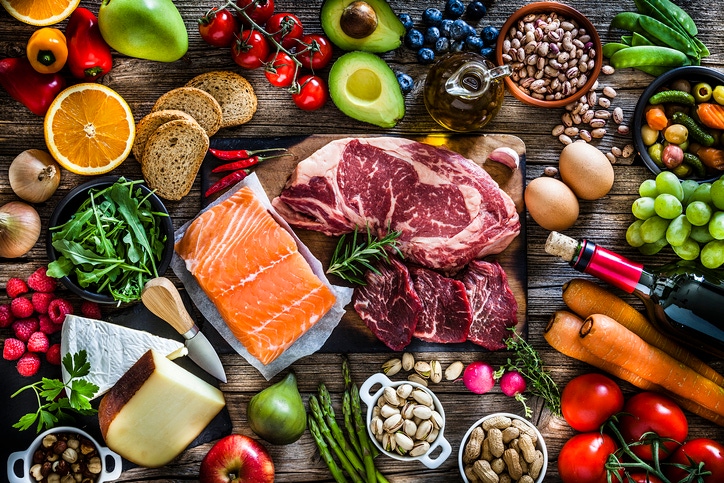DGAC draft report viewed as flawed by many
2020 dietary committee doesn’t flinch in the face of growing criticism.
June 29, 2020

Any account of the 2020 Dietary Guidelines Advisory Committee (DGAC) activities can only hit main trends and concerns. As previous articles in BEEF Daily and Cow-Calf Weekly have indicated, many are concerned that the DGAC has not carried out its duties properly in considering changes to the Dietary Guidelines for Americans, which are updated every five years.
Interestingly enough, with five years between Guidelines reports, one of the main concerns from expert observers and from some DGAC members has been the lack of time to properly analyze and digest the data. The coronavirus didn’t help but the volume of data—not including many studies the committee did not review, refused to study or studied on the sly and did not acknowledge, has a lot to do with the situation.
Committee concerns
The committee didn’t mention the recommendations from the National Academy of Sciences, Engineering and Medicine study commissioned by Congress after the last widely criticized 2015 Dietary Guidelines. It recommended that the selection and evaluation of studies, as well as the suggestion of topics, be handled by a totally separate, specially qualified panel.
That advice was ignored by USDA-HHS and would have helped alleviate the time crunch, the quality and evaluation of research attacked by professionals and nutrition associations, the omission of categories of study, the lack of transparency in process and conclusion and the credibility questions about the report.
Several influential groups and hundreds of professionals have expressed their opinion to USDA-HHS that the final report of the 2020 DGAC should be delayed until various questions regarding process, transparency and conclusions are more thoroughly examined. Rep. Dusty Johnson (R-SD) also sent a letter to the agencies questioning the process. He is ranking member of a House Agriculture nutrition subcommittee.
The final committee public meeting was held in June just one week after public comments on the draft report were due. Meaning committee members had likely not read the last 10,000 to 20,000 comments, many of which dealt with that draft report. Over 60,000 total comments were filed.
The Academy of Nutrition and Dietetics, a group representing over 100,000 nutrition professionals, filed comments critical of the process of the DGAC, including the failure to “transparently report the committee’s reason for exclusion of certain studies.” They added that “…it is not acceptable that parts of methodology that would be essential in a written scientific paper are not part of the open information.”
The group also held that the public’s trust in the evidence would be compromised without more clarity and research. The Nutrition Coalition sifted through comments like those, sent a letter and filed comments on other critical aspects of the Report. Nina Teicholz is executive director of that group.
Over 300 Ph.D.s, doctors and other nutrition professionals signed a letter to USDA-HHS regarding process issues and allegations regarding process by committee members. They requested steps to bolster the credibility of the guidelines, such as better grounding of the guidelines in scientific methodology and inclusion of all the relevant evidence.
Crossover proteins
These questions about a less-than-stellar process might well have bearing on other issues of concern to animal protein producers, a term I had not heard surface during the final all-day hearing. Meat and regular dairy products were referred to as “crossover” dietary components, meaning they showed up on both the charts showing beneficial effects and those on detrimental effects on health.
It also took prodding from one of the DGAC members to elucidate that the term “lean meat” meant different meats in some studies than others, could include red or processed meat or poultry but were not always specified in individual studies and were lumped together in the committee’s consideration.
Crossover foods were on the committee’s list for “further study.”
The professionals I asked were as surprised as I was that dietary cholesterol showed up in the report at all, as that was not on the list of agreed-upon topics. And the 2015 DGAC had pretty well dismissed dietary cholesterol as a concern, with Alice Lichtenstein, vice chairwoman of that committee, commenting that the data had never supported limits on cholesterol consumption or the link to blood cholesterol levels.
Dr. Ronald Krauss, an American Heart Association fellow, committee member and spokesman, said the few hyper-responders to dietary cholesterol did not justify restrictions for the whole population, the New York Times reported in 2015. Nevertheless, the 2020 draft guidelines gave considerable attention to limiting cholesterol consumption and claimed “strong” evidence for such.
“Diets lower in dietary cholesterol may reduce total and LDL cholesterol,” the DGAC draft report said. But regarding cardiovascular disease, the report referred to a “small body of evidence on dietary cholesterol,” citing a need for “additional research” to isolate independent effects of dietary cholesterol.
After 60 years of trying to prove a connection between dietary cholesterol and heart health, the “experts” are still short of evidence on any possible avenue of effect.
Weight loss limbo
The attitude of some 2020 committee members regarding overweight and obesity seems to conflict with the official position regarding what studies to include. The Committee said specifically that they excluded studies that involved weight loss or obesity. Yet several times in the draft report are references to recommendations that would influence weight gain or loss for Americans.
The exclusion of studies regarding weight loss are a primary bone of contention for a number of groups and lots of professionals, given that roughly two-thirds of Americans are overweight or obese. The experts are very concerned that the guidelines do not acknowledge this reality. No specific weight loss dietary patterns are in the guidelines, nor acknowledgement of any role for low carbohydrate diets.
Then there is the saturated fat fight, one of the most vociferous battles between the DGAC and nutrition and health professionals. That battle, of course, affects the animal protein industry drastically because the efforts to reduce the percentage of saturated fat in the diet can be regarded as a back-door method of reducing the quantity of animal protein consumption.
The committee recommends that “less than 10% of energy” should be from saturated fats. They referenced “strong and consistent evidence” from randomized controlled trials that replacing saturated fatty acids with unsaturated fats significantly reduces total and low-density lipoprotein cholesterol.
That explains their resumption of the cholesterol question—it undergirds their recommendations on saturated fats. And there is no discussion of evidence that serum cholesterol has no real effect on coronary heart disease anyway.
A recently released State of the Art Review published in the Journal of American College of Cardiology said that saturated fat restrictions are not justified and reducing saturated fatty acids had no beneficial effects on cardiovascular disease and total mortality.
There is no word yet regarding any delay or revision of the final report.
Steve Dittmer is a longtime beef industry commentator and executive vice president of the Agribusiness Freedom Foundation. The opinions of the author are not necessarily those of beefmagazine.com or Farm Progress.
About the Author(s)
You May Also Like




.png?width=300&auto=webp&quality=80&disable=upscale)
